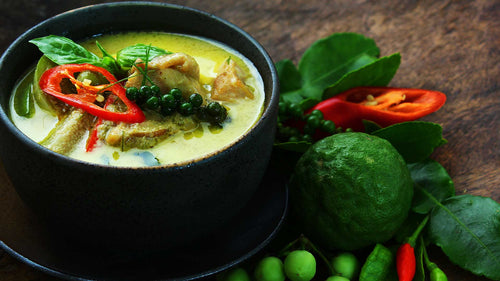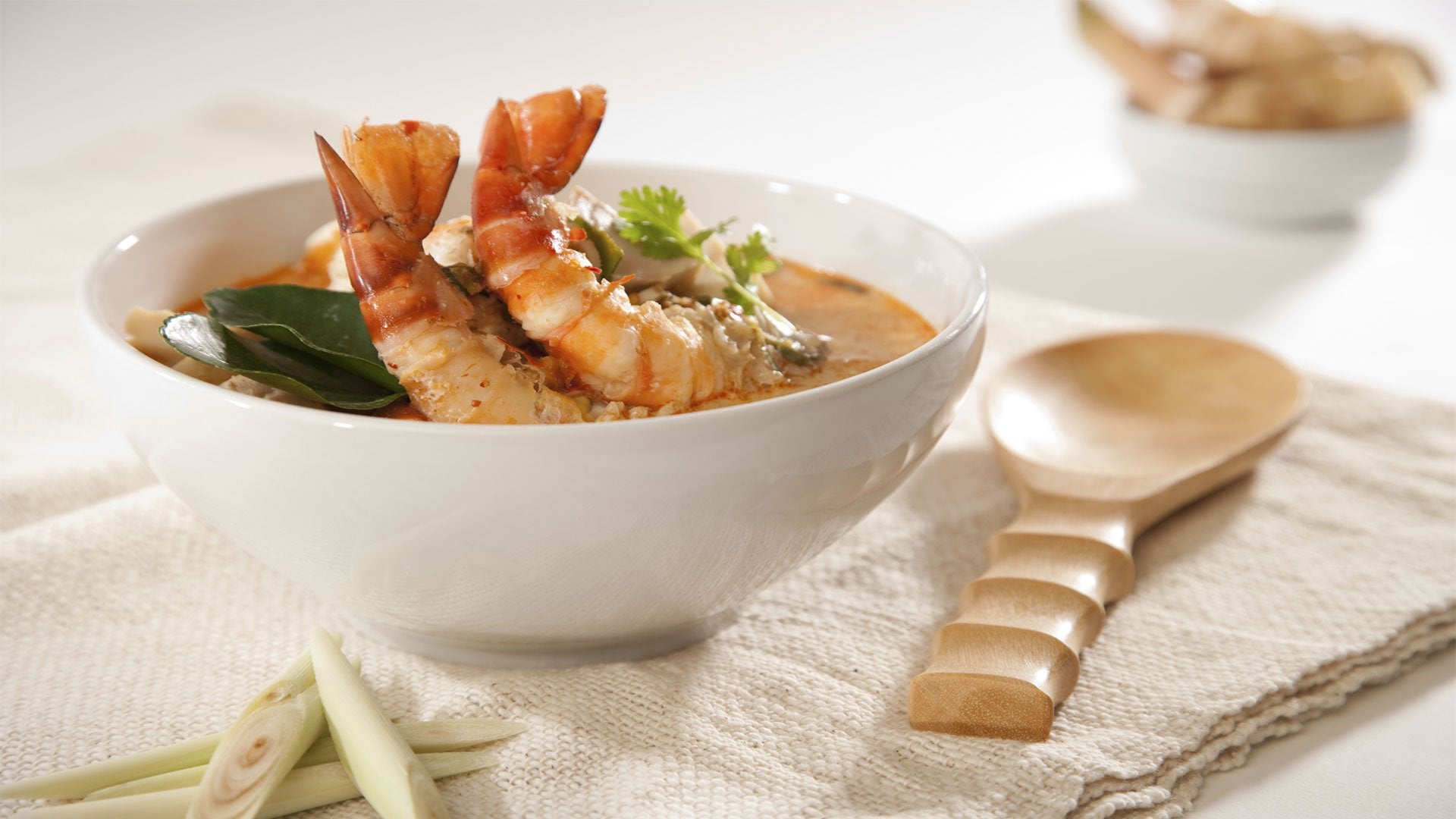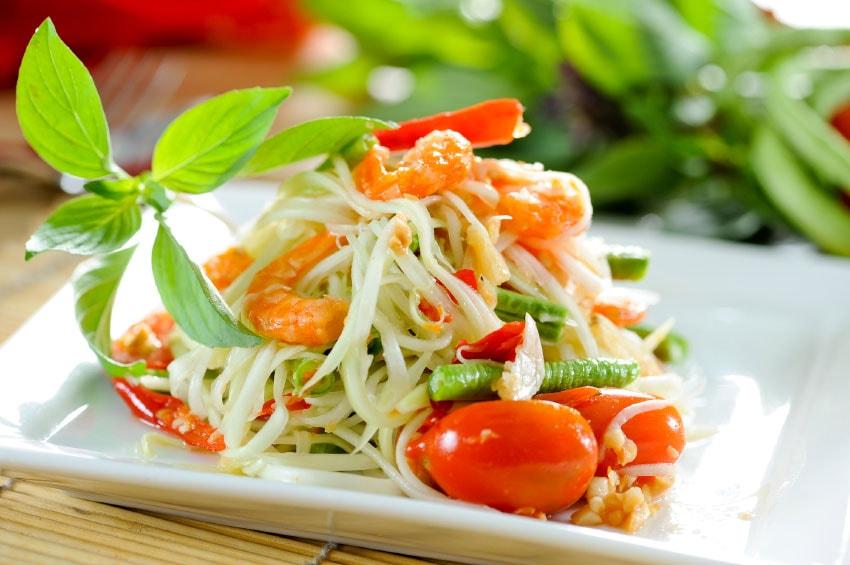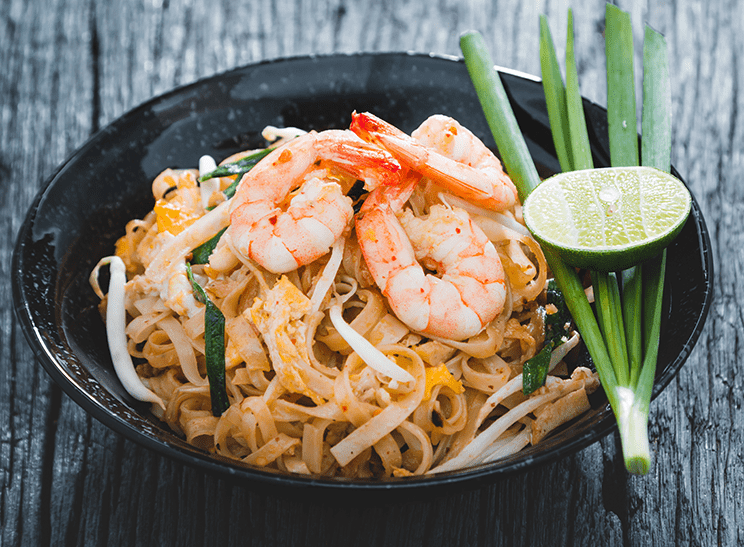What are the different heat levels of Thai chillies?
Have you ever wondered how we measure the heat of chillies? A group of friends could all eat the same chilli and have very different tolerances. Who is to say what’s the hottest? While that is true, what if we told you that there is actually an official way to measure the heat and spiciness of all chillies. Introducing the ‘Scoville Scale’. The Scoville scale is the official numerical scale of measuring the pungency or spiciness of chillies.
So, how does the Scoville scale work?
The Scoville scale uses Scoville Heat Units, also known as, SHU which is the unit used to measure the concentration of capsaicin in the chillies. Capsaicin is the active component in chilli peppers that gives them their spiciness. Scoville heat units measure the amount of times capsaicin has to be diluted in sugar water in order for it to become tasteless or ‘not spicy’. This number is what determines where on the scale chillies would measure. Another, simpler way to understand this is that SHU is just a measure of how much capsaicin is present within a chilli pepper. The more capsaicin, the higher the Scoville heat units and the hotter and spicier the chillies is and of course, the lower the SHU, the milder the heat of the chilli.
Types of Thai chilli peppers:
A common misconception when it comes to Thai chillies is that there is only one type. You will often find on generic Scoville scales that they include Thai chilli as one variation with one set SHU measure. On the contrary, there are actually over 79 different varieties of Thai chilli peppers within Thailand alone. Most Thai chillies are small and tend to be on the spicier side of the scale, however, there are a few larger and milder types available too.
Which Thai peppers do Thai Food Online stock? And where do they sit on the Scoville scale?
At Thai Food Online, we stock a small selection of the most commonly used chillies in Thai cooking. Continue reading to find out more about each type and where they sit on the Scoville scale.

SHU Scale: 1,000 (LOW HEAT)
Our fresh large red Thai chillies peppers are also known as ‘Thai spur chillies’ or in Thailand, Prik Chee Fah. These are long (typically between 5-12cm in length), slender and tapered towards their ends. In fact, ‘Prik Chee Fah’ in Thai, can be translated to mean ‘chillies pointing to the sky’. These chillies are popular for everyday use in many traditional Thai and south-east Asian cuisine, notably for their low heat level which is suitable for most tolerances.

SHU Scale: 1,500 (LOW HEAT)
Green Thai chillies can often differ in shape and size depending on variety. While our fresh large green Thai chillies have a similar appearance to the fresh large red, also being elongated, slender and also tapered at their non-stem end, the large green chillies are slightly more spicy with a SHU scale ranking of 1,500. These chillies have an earthy taste and provide an instant kick to recipes. Large green Thai chillies are commonly used as a flavouring agent when preparing the traditional Prik Nam Pla sauce recipe which is used as a dip for many tart Thai fruits like sour green mango and Thai guavas.

SHU Scale: 75,000 (MEDIUM-HIGH HEAT)
Our fresh small Thai green chillies are typically known as Thai Jinda peppers or ‘Prik Jinda’. These are at the middle of the scale when it comes to the Thai chillies stocked at Thai Food Online, with a Scoville measure of 75,000 SHU. This type of chilli is considered to be very spicy and is also one of the most commonly used chilli in Thai cooking. With that being said, this chilli is a good starting point for those looking to experiment or expand their spice tolerance in South-east Asian cuisine. While this chilli is considered to be quite hot for most people, in Thailand this would be medium range heat level.

SHU Scale: 90,000 (HIGH HEAT)
The Thai bird's eye chilli is probably the most widely recognized chilli across the world. In Thailand, these chillies are known as ‘Prik Kee Nu’ and smaller in size than the ‘Prik Jinda’ chilli peppers. Thai birds eye chillies measure at 90,000 on the Scoville scale. Meaning that despite their small size, they are very spicy and high heat. In fact, this chilli was previously listed in the Guinness Book of Records as the hottest chilli on the planet. One of many great Thai recipes that you can use to sample the heat level of this chilli is the traditional Thai Papaya Salad recipe or ‘Som Tam’.

SHU Scale: 110,000 (VERY HIGH HEAT)
The hottest and spiciest Thai chilli is known as the ‘Prik Kee Noo’, these are our fresh small Thai red chillies. These chillies are even smaller than the Thai bird’s eye chillies. And despite being the smallest chillies we stock, they are the spiciest of all the Thai chillies. It’s safe to say that the general rule of thumb when it comes to Thai chillies in that the smaller the chilli the higher the capsaicin levels and the higher the heat and spiciness. These red chillies are very potent with spice, however, because they are ripe, they gradually release their heat - often when you are least expecting. They are used in a range of popular Thai recipes such as Thai red curry and tom yum soup.
Thai Chillies in Cooking
So there you have it, you now know the different heat levels for the most commonly used chilli peppers in Thai cooking and how to pick the best chilli to suit your tolerance levels. Chillies are not just a staple in Thai and South-east Asian cuisine, they’re an essential part of the character of spicy Thai food. Truly authentic Thai recipes that use chillies always have the appropriate kick and combine wonderfully with other staple ingredients such as shrimp paste, coconut milk, tamarind, palm sugar and a range of Thai herbs such as lemongrass and galangal. If you can handle your spice, we always advise not to skip out on the chillies when it comes to cooking authentic Thai recipes.














Leave a comment